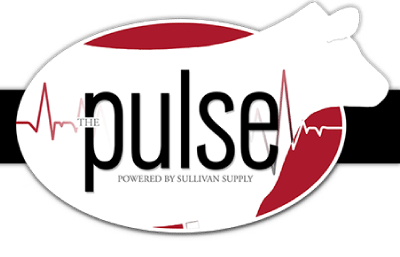Tom Noffsinger: 5 end-goals of proper animal handling
When cattle trust you, they’ll tell the truth about their health status.
Think of the last time you saw cattle being worked, either in the corrals or the pasture, and they were rolling their eyes and jumping fences. That situation, says Tom Noffsinger, is not only completely avoidable, but entirely the fault of the people working the cattle.
“It’s really important that we think about stockmanship being an attitude,” he told cattle feeders attending the Merck Cattle Feeders Business Summit this week in Denver. “The caregiver or whoever is in contact with those animals has a responsibility to know that whatever they do when you’re with them is because of you, not them.”
And, if people who handle cattle can understand basic stockmanship principles, they will see a positive shift in disease incidence, performance and safety of both the animals and the people, says Noffsinger, a veterinarian from Benkelman, Neb., and one of the nation’s leading experts on low-stress cattle handling and effective stockmanship.
However, he points out that low-stress cattle handling is not about making cattle go slow. “We want those cattle to move,” he says. But you want them to trust you, have confidence in you and their surroundings and to know that you can communicate with them and ask them to do what you want.
With that in mind, here are the goals Noffsinger would like to see cattle caregivers strive to accomplish in their daily interaction with their cattle:
- Manage relocation stress. “Cattle do pretty well until we move them. So I think it’s important as we prioritize our activities, that first impressions are so important. What are you trying to create? A new home or a different home or are you trying to create a five-star resort. That five-star resort is what we should have as a goal when we receive new cattle,” he says.
- Communicate. “The way you do that is you show these cattle you know how to communicate with them. You don’t yell at them, you don’t scream at them. You don’t have anything in your hands. You just stand there and show them know that you understand them.”
- Encourage trust. Once they know they can trust you, they’ll stop hiding the indications of lameness or disease that you need to find. Cattle, Noffsinger says, are the biggest liars in the animal kingdom. Since they’re prey animals, if they don’t have confidence that you aren’t a threat, they’ll hide any indication of weakness for as long as they can.That’s why you often don’t start finding lame or sick cattle until the third, fourth or fifth day after arrival. It didn’t take that long for the disease to develop, it took that long for the cattle to wear out and finally let down their guard. “So it’s really important that we know how to get these cattle to tell us the truth about their health.”
- Immune function. Noffsinger admits that it’s still a mystery why some cattle respond to vaccines and therapeutic drugs and others don’t. But he’s sure he can tip the odds in favor of a better outcome after the shots are given.“Water is one of the secrets to life. If cattle don’t drink, they’re not going to eat. If cattle don’t drink, they’re not going to respond to antibiotics and vaccines.”
- Rest and recuperation. “Rest and lying down are two different things,” he says. If cattle aren’t acclimated to their new home and don’t trust their surroundings, they may lie down, but they’re still on high alert. If they have been properly acclimated and have confidence in their handlers and surroundings, then they can truly get the rest they need.
Noffsinger says cattle want to see their source of guidance and their destination simultaneously, and when you can create that situation, cattle will learn to trust both the caregiver and their surroundings more quickly. To illustrate, he showed a video of a feedyard cowboy unloading newly-arrived feeders. Rather than jab and poke the calves to get them off the truck, he stood quietly where they could see him. The calves came down the ramp of their own accord and every animal looked at him. With just a slight wave of his left hand, he indicated the direction they should go, the calves saw the open gate and put themselves in the pen.
“What we want to do,” Noffsinger says, “when people come to work at the ranch, the feedyard or a growing yard, that they’re dedicated to making sure every time they’re in contact with cattle, it’s a positive experience for both the cattle and the people.”
Shared from BeefMagazine.com

